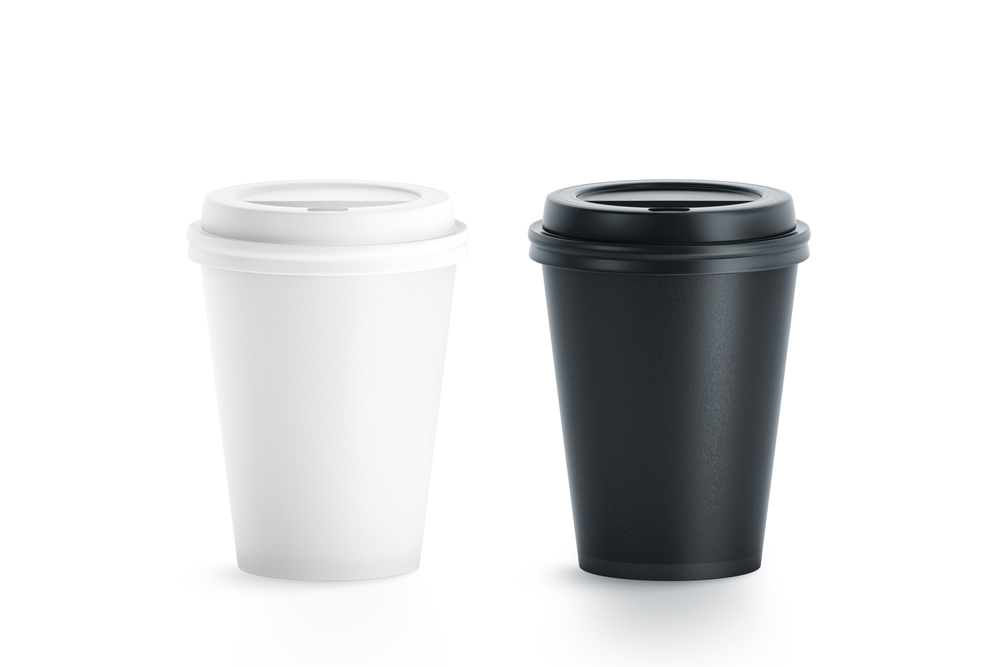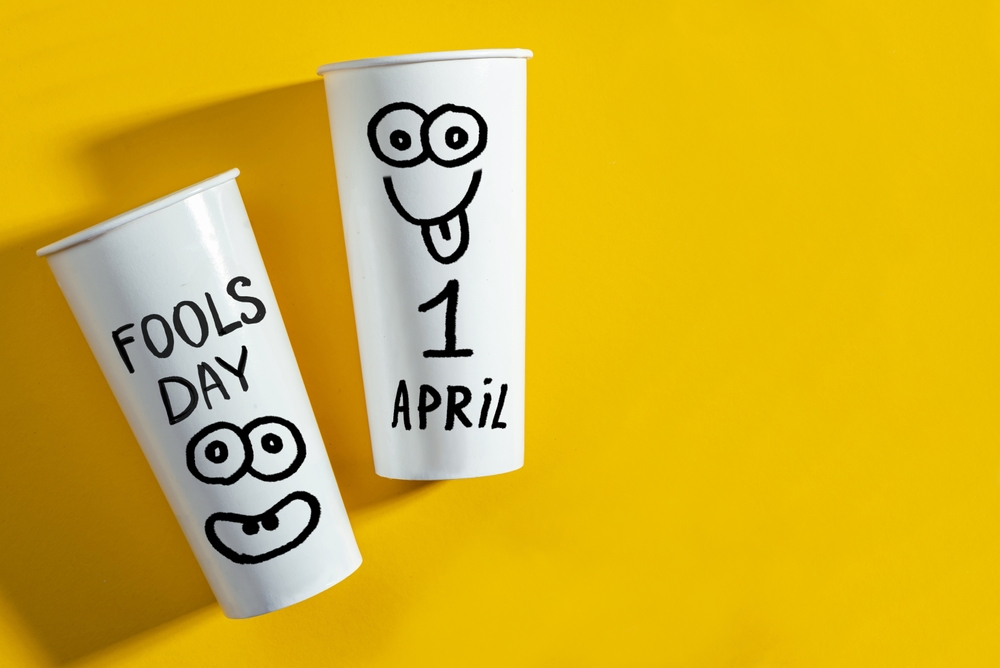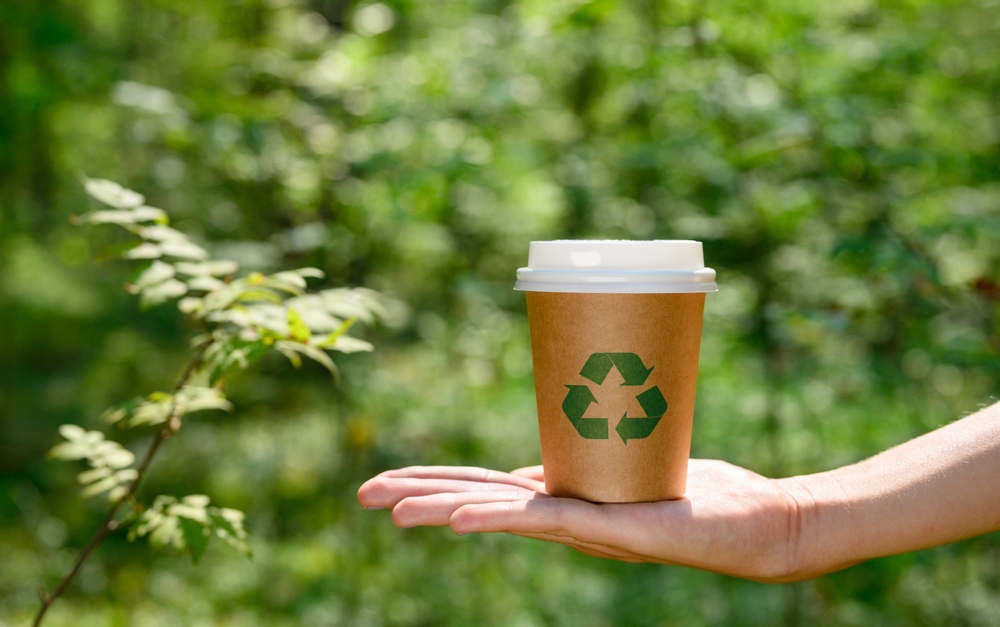A Cost-Benefit Analysis of Branded vs Non Branded Paper Cups
By Morten Numrich · 13. June 2024
In the branded vs non-branded paper cups decision, what’s at stake for your business?
We cut through the clutter to provide you with a direct comparison, helping you decide which is the true cup of choice for your brand’s visibility and cost efficiency.
Branding vs. Budget
 unbranded black and white disposable paper cup
unbranded black and white disposable paper cup
When venturing into the realm of disposable drinkware, it becomes crucial to weigh up if the appeal of branded coffee cups warrants their steeper cost.
It’s a tale of two cups: on one corner, the eye-catching allure of custom branded cups, and on the other, the understated simplicity of budget-friendly generic options.
Such a decision demands thorough consideration as it directly impacts brand marketing and customer experience, making crunching unbranded versus branded cups a vital step in the process.
The choice of custom branded cups begs the question: is the investment worth the potential return?
The choice between a printed paper cup adorned with a logo and a nondescript container may seem trivial, but the repercussions echo through the halls of consumer minds and business ledgers alike.
Branded vs. Non-Branded
Upon analysing the costs, a noticeable price difference becomes apparent between generic and custom branded cups – it’s more than just a few pennies.
Non-branded paper cups may only set you back 8 to 12 cents each, a thrifty choice for the budget-conscious business owner.
Oppositely, opting for the branded cup comes with a heftier price—each one costing between 20 and 25 cents, an investment in brand identity that begs the question: are the branded cups worth the higher cost?.
However, for those torn between budget restrictions and brand visibility, there’s a compromise: branded sleeves.
Less expensive than full cup branding, these sleeves offer a cost crunching unbranded versus branded solution, maintaining brand visibility without the full plunge into higher costs.
Enhancing Brand Visibility With Cups
Step outside any coffee shop, and chances are you’ll see someone holding a paper cup marked with a recognizable logo.
These mobile billboards travel far and wide, turning every customer into a brand ambassador.
While the digital realm sprawls with marketing opportunities, traditional advertising through the tangible experience of a branded paper cup adds a sensory dimension that cannot be replicated online.
Measuring ROI on a brand in this context can be challenging, but the impact of such branding efforts is undeniable.
Whether for budding startups or established chains, the choice to invest in branded coffee cups can serve as a pivotal element in a strategy to enhance brand recognition in a crowded marketplace.
In fact, the British Coffee Association has recognized the importance of such branding efforts. Considering the branded coffee cups’ worth, it’s a smart decision for businesses to make, especially when evaluating the ROI on brand marketing.
Perception is Key: How Customers View Your Cup Choice
 woman holding morning coffee paper cup
woman holding morning coffee paper cup
The importance doesn’t only lie within what the cup contains, but also what the cup signifies about your coffee shop.
A branded cup carries with it an air of quality and a promise of identity, setting expectations before the first sip.
Moreover, transparency in sustainability, like using biodegradable paper cups, not only reflects a commitment to the environment but can also resonate with customers, potentially justifying a higher price point for your offerings.
The Marketing Might of a Paper Cup
 fun paper cup design
fun paper cup design
Within the broader perspective of brand marketing, the simple paper cup stands firm against the giants of conventional advertising channels.
When considering the costs of print ads or TV commercials, the palatable price of a branded paper cup is no wonder why many coffee shop owners see it as a savvy marketing investment.
With social media platforms offering targeted advertising at roughly $10 per thousand impressions, the return on investment for a paper cup that can be seen by hundreds over its lifespan starts to look quite attractive.
Combined with a solid social media strategy, these cups can become a fundamental part of a holistic local reputation enhancement campaign.
The Viral Potential of Branded Cups
Picture a customer exiting your establishment, branded cup in grasp, poised to navigate the city streets.
This simple act transforms your customer into a walking advertisement, showcasing your brand to every passerby.
The potential for virality doesn’t stop there; a well-designed cup can spark conversations, multiply touchpoints with potential patrons, and even make its way onto social media feeds, broadening its reach exponentially.
QR Codes and Social Sharing
Transcending simple aesthetics, incorporating QR codes on paper cups propels them into the digital era.
This blend of physical and digital marketing allows customers to interact with your brand in meaningful ways, such as:
- Joining loyalty programs
- Accessing special offers
- Participating in contests or giveaways
- Providing feedback or reviews
- Following social media accounts
All of this can be done with a simple scan of the QR code on the cup.
Furthermore, the adaptability of dynamic QR codes means that campaigns can be tweaked in real-time, all the while collecting valuable data to gauge the effectiveness of these mobile advertising platforms and applying the trick to measuring ROI.
Biodegradable Paper Cups and Brand Image
 recyclable paper cup
recyclable paper cup
Sustainability extends beyond being a mere buzzword; it represents a commitment that profoundly resonates with consumers.
In the context of paper cups, opting for biodegradable options not only diminishes environmental impact but also polishes a brand’s image, aligning it with the values of an eco-conscious clientele.
This choice signifies a business that cares, fostering a connection with customers who prioritise the planet’s health alongside their own.
Moreover, adopting environmentally friendly practices enables companies to nurture trust and loyalty, building a relationship with their customers that surpasses mere transactions.
The Eco-Friendly Edge
Choosing biodegradable paper cups offers several benefits:
- Lessens carbon footprint 🌍
- Avoids harmful chemicals found in plastic coatings
- Safer alternative for consumers and marine life
- Composting instead of landfilling preserves natural resources
By choosing biodegradable paper cups, coffee shops can champion a healthier planet and take tangible steps towards sustainability.
These actions express a business’s values eloquently, and for numerous customers, this dedication to environmental responsibility serves as a persuasive incentive to return.
Balancing Cost and Sustainability
Despite the inclination towards green, the financial implications cannot be overlooked.
Fortunately, biodegradable paper cups offer a middle ground where fiscal responsibility and environmental stewardship meet.
Although the upfront costs of these cups may be higher than their plastic counterparts, many consumers recognize the value they represent and are willing to support businesses that make sustainable choices.
Creative Alternatives to Full Branding
With the pursuit of uniqueness, brands need to continually adapt to uphold their charm. Full cup branding, while effective, isn’t the sole path to keeping your brand fresh in the minds of consumers.
The market offers a myriad of creative alternatives that can captivate customers and create a buzz without necessitating a complete branding overhaul.
Maximising Impact, Minimising Cost
Welcome to the realm of limited edition cup runs, a place where exclusivity blends with practicality.
Leveraging digital printing technology, businesses can produce small batches of unique cup designs, perfect for special events or seasonal promotions.
These limited drops not only pique customer interest but also encourage a sense of urgency to collect or use them before they’re gone.
Partnering for Unique Designs
Occasionally, the most striking designs originate beyond the confines of your business.
Collaborating with local artists can yield cup designs that are not only visually stunning but also deeply connected to the community’s spirit.
Such partnerships can transform a cup into a canvas, turning a daily coffee routine into an experience of local culture and artistry.
Summary
From the cost-conscious simplicity of non-branded cups to the dynamic marketing potential of branded vessels, the choice between the two is a reflection of a brand’s identity, values, and vision.
As we’ve journeyed through the realms of visibility, customer perception, sustainability, and creativity, it’s clear that whether you’re a small café or a sprawling chain, the paper cup remains a potent symbol and tool in the art of brand storytelling.
May your cup always be full—of great coffee and even greater possibilities.
Frequently Asked Questions
Are branded paper cups really that much more expensive than non-branded ones?
Yes, branded paper cups are generally more expensive than non-branded ones, with a cost difference of about 10 to 15 cents per cup.
Can branded cups actually enhance brand visibility and recognition?
Yes, branded cups can definitely enhance brand visibility and recognition by acting as mobile advertisements and contributing to the sensory experience of the brand. They are a valuable addition to traditional marketing strategies.
How can QR codes on paper cups improve customer engagement?
QR codes on paper cups can improve customer engagement by digitising payment methods, providing access to services like free Wi-Fi, supporting advertisements, and amplifying campaigns, which can enhance the overall customer experience and build brand loyalty.
What are the environmental benefits of using biodegradable paper cups?
Using biodegradable paper cups is beneficial for the environment as they are recyclable, compostable, and free from harmful plastics, conserving resources and protecting marine ecosystems.
Do limited edition cup designs actually impact customer engagement and sales?
Limited edition cup designs can indeed impact customer engagement and sales by creating excitement, encouraging repeat visits, and showcasing business creativity, ultimately fostering customer loyalty.

